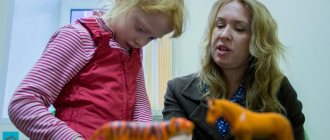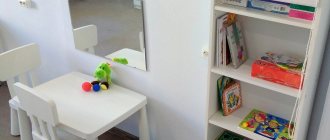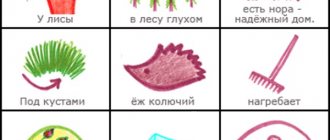Psycholinguistics as a scientific discipline
Studying a native or foreign language at school is quite often boring, and since everyone knows that languages are studied by a science called “linguistics,” some people think that linguistics is a tedious description of the systems of declension and conjugation in different languages; such an impression is too superficial and essentially incorrect. It is like two peas in a pod to opinions such as “botany studies pistils and stamens,” zoology “describes insects and cockroaches,” medicine “intestines and vertebrae,” etc. With such ideas, it is better for a person not to engage in science at all .
We address our book to those who understand the importance and complexity of scientific knowledge and have consciously decided to join such knowledge; Moreover, among scientific objects there are few that can be compared in complexity and significance with human languages and with the process of their functioning in society - with speech activity. The science that studies and describes the characteristics of the generation, understanding, functioning and development of speech is called psycholinguistics. The question may, of course, arise: why doesn’t linguistics itself (i.e., the science of language) deal with the process of speech, if speech is “language in action”? It is easiest to say that in the very name “psycholinguistics” the second part is “linguistics”. Therefore, psycholinguistics is a part of linguistics. However, it must be admitted that not all linguists fully recognized it as “theirs.” Why? Because, firstly, linguistics, a fairly “old” science, has long had its own traditions, the main of which is maintaining fidelity to its traditional object of study, language as such, language as a system. It must be admitted that this traditional object of traditional linguistics is far from being fully described. It is clear that describing human language in its several thousand national and regional varieties is a difficult and lengthy task. This honorable and necessary task will, of course, continue in the future, especially since all languages must not only be described, but also compared with each other, penetrate into their history, explain the endless variety of their constituent means, the ways of their development and mixing, helping
3
thereby - together with the history of the culture of the world - to understand how humanity has developed and is developing.
Secondly, linguists themselves are not without self-criticism, believing that in addition to objects traditional for traditional linguistics, there are also other objects that are adjacent to the previous ones and are necessary for the expansion and deepening of linguistics itself. Thus, back in the early 50s, the remarkable linguist Emile Benveniste wrote: “... one cannot limit oneself only to material forms, that is, one cannot limit all linguistics to the description of linguistic forms.” And in the early 80s, Moscow State University professor and famous linguist A.E. Kibrik even emotionally expressed his attitude towards the stubborn traditionalism of linguistics: “It is difficult to imagine a more caste-based science than linguistics. Linguists are constantly dissociating themselves from something. Their favorite way to destroy an ideological opponent is to declare: “This is not linguistics.”
Meanwhile, psycholinguistics will soon be fifty years old; Having been born, it rapidly developed and is developing - despite all kinds of “non-recognition”. Moreover, it develops in full accordance (and not contrary, as has been and is asserted by many traditional linguists) with the thought of the famous linguist Ferdinand de Saussure: “One can imagine a science that studies the life of signs within the framework of the life of society; such a science would be part of social psychology, and therefore general psychology... It should reveal to us what signs are (i.e., units of language as a sign system - I.G., K.S.) and by what laws they are governed... Linguistics is only a part of this general science; the laws that semiology will discover (as F. de Saussure called a science that did not yet exist - I. G., K. S.) will be applicable to linguistics...” And again: “... if for the first time we manage to find a place for linguistics among others sciences, then this is only because we connected it with semiology.” And F. de Saussure showed in his works how, in his opinion, a new linguistic science should be built, choosing only the system of the language itself as the only object of linguistics - until a science is formed, which he called “semiology” (“since, - he wrote, “it doesn’t exist yet”). The main thing that I wanted to show here - with the help of quotes from the works of de Saussure himself - is that references to his authority absolutely cannot justify those traditionalists from linguistics who
4
who demand that “their” science be left intact, protected from psychology or sociology.
However, despite the inertia of conservatives, a new, intensively developing direction has emerged in modern linguistics, which is called anthropocentric (or anthropological). As is clear from the internal form of the term itself (anthropos - person), anthropocentric linguistics places at the center of its interests not so much language (from the point of view of the laws of its internal structure), but rather the “speaking person”, i.e. linguistic personality; It is the linguistic personality
(i.e., a person in his ability to perform speech acts) - has become an integral
object
of numerous areas of the science of language, which constituted various areas of anthropocentric linguistics. These include pragma- and sociolinguistics, linguistics of children's speech (ontolinguistics) and text linguistics, ethnolinguistics, and many others. etc.
Psycholinguistics, in our opinion, forms the core of the anthropocentric direction in linguistics. Despite the fact that the object of study - the linguistic personality - is common among the different disciplines that make up anthropological linguistics, each of the young sciences presented has its own subject of study. The subject
of psycholinguistics is linguistic personality, considered in the individual psychological aspect
.
Psychology is much more willing to consider psycholinguistics as “its own.” True, in psychology there is a long-existing field - the psychology of speech, the object and subject of which exactly coincide with the object and subject of psycholinguistics. And by now there has been a tradition of identifying these two disciplines. There is a reason for this identification, but there is still a slight difference in the understanding of these terms. The differences relate mainly to the perspective of considering the subject of study: psychology focuses more on the characteristics of the mental functions of consciousness during the generation, understanding and formation of speech, while psycholinguistics, at the same time, tries to take into account the ways of expressing (linguistic and nonverbal) these functions in speech activities and speech behavior of people.
Psycholinguistics is a fairly young science. In our country and abroad it arose at approximately the same time; in the late 50s - early 60s of the 20th century. The book that
5
lives in the hands of the reader, is dedicated to presenting the foundations of Russian psycholinguistics. To get acquainted with the foreign tradition of the scientific field that interests us, we refer readers to specialized literature, a list of which is given at the end of our manual.
The “father” of the Soviet school of psycholinguistics was Alexey Alekseevich Leontiev. The scientific direction he created was based mainly on the achievements of Russian psychology, and above all, on the conceptual provisions developed by the “Mozart of psychology” Lev Semenovich Vygotsky and his students and associates (A. R. Luria, A. N. Leontyev, etc.). Psycholinguistics was then based on the theory of activity, therefore the domestic version of psycholinguistics in the early stages of its formation began to be called the theory of speech activity. The theory of speech activity formed the foundation of what is now called the “Vygotsky school” or “Moscow school” in psycholinguistics. At first - in the 60s - 70s - it almost completely determined the range of problems and theoretical achievements in the study of the individual mental characteristics of the linguistic personality. The first works of domestic psycholinguists aroused great interest among scientists living in various parts of our country. The result of this was a kind of psycholinguistic “boom” that arose in the 80s. Gradually, the framework of psycholinguistics began to expand; as a result, it became much broader than the theory of speech activity. Along with Vygotsky’s school, other schools arose in Russian psycholinguistics. Among the most authoritative research groups is the circle of scientists who developed the ideas of the talented psychologist and psycholinguist Nikolai Ivanovich Zhinkin. The existence of various “schools” in domestic psycholinguistics did not hinder, but rather contributed to the expansion of the problems of this science and the deepening of the results obtained in the course of research.
Current psycholinguistics is developing most intensively in the direction of social psychology and sociolinguistics. Her interests lie in determining the psychological features of the relationship between linguistic consciousness and human social activity, social existence and the everyday life of linguistic individuals. And here the works of another bright and diverse
6
The first Russian researcher, Mikhail Mikhailovich Bakhtin, who back in the 20s tried to substantiate the so-called “sociological method” in linguistics.
The expansion of the scientific space has led psycholinguistics to the emergence in its depths of various areas independent in the nature of the problems they solve. Some of these areas (for example, phonosemantics) have fairly clear scientific boundaries; the outlines of other internal sections (pathopsycholinguistics, linguistic conflictology, etc.) are still unclear and diffuse.
Currently, we can talk about the pattern of distinguishing general and specific psycholinguistics in the holistic space of our science.
General psycholinguistics
— explores the facts of linguistic consciousness that are characteristic of all speakers of a given language, regardless of the characteristics of their speech biography. As an object of consideration, she takes a certain averaged image of an adult healthy (physically and intellectually) linguistic personality, abstracting from the individual physiological and social differences of people.
Private psycholinguistics
— study different areas of development and functioning of language in speech behavior and activity. By the present period of the formation of psycholinguistics as a science, social psycholinguistics and developmental psycholinguistics (ontolinguistics) have emerged as independent scientific fields.
Social psycholinguistics
— in his consideration of the individual psychological characteristics of a linguistic personality, he places emphasis on differences in speech behavior, activity, speech-mental manifestations, which are dictated by the socio-psychological characteristics of people’s existence.
Developmental psycholinguistics (ontolinguistics
) - focused her efforts on the study of the formation of linguistic personality in ontogenesis. Sometimes it is also called psycholinguistics of Danish speech.
Being at the intersection of linguistics and psychology, psycholinguistics actively uses methods
both sciences. Thus, in the analysis of specific speech facts, she widely uses descriptive and comparative-descriptive approaches common to the science of language. From psychology, psycholinguistics takes methods of “extracting
7
some" material for thought. And this, by the way, distinguishes it from traditional “immanent” linguistics.
Traditional linguistics gravitates toward the “desktop” study of “linguistic processes.” Psycholinguists are interested in phenomena that occur in the “live” everyday communication of people. Therefore, one of the sources of obtaining material for research is observation of real communication.
. And here the eye and ear of a psycholinguist eagerly absorb everything that the office of another scientist would leave indifferent, which is traditionally considered “negative language material.” This includes “incorrect” colloquial constructions, various kinds of slips and “mishearings,” slips and typos made by native speakers. The interest of a psycholinguist will be aroused by the gentle “cooing” of lovers, and an ugly scandal in a store, and even the unclear, slurred speech of a drunkard. And the speech of children is just “gold ore” for him.
Observations of real communication allow us to consider linguistic manifestations within specific communicative situations, which allows the researcher to study not his own ideas about language, but the “living life of language.” However, many problems of the anthropocentric direction in linguistics - primarily the problem of the relationship between language and thinking - cannot be resolved based only on observations of speech. Here experiment comes to the aid of psycholinguistics. It must be said that experiment is the soul of psycholinguistic research.
. It is on the basis of special, often witty, laboratory experiments with various subjects that the concepts that form the theoretical foundation of psycholinguistics have been developed. On the pages of our book we will more than once describe experiments, sometimes inviting readers to check their results on their family and friends.
Correction of violations
The speech therapy program aimed at correcting FFDD implements the following tasks:
- form the basis of speech (psychological and lexical);
- correct sound pronunciation;
- develop phoneme analysis skills;
- develop coherent speech;
- teach the skill of full verbal communication;
- form grammatical categories.
It is necessary to begin treatment for speech disorders before the preschooler enters first grade . Early detection of developmental delays and difficulties with pronunciation of sounds makes it possible to make a diagnosis and carry out work to eliminate defects.
In addition to articulation exercises and speech communication, classes with a speech therapist should include the development of motor skills (gross and fine), relieving muscle tension, constant monitoring of one’s own speech, and acquiring the skill of distinguishing normalized pronunciation from erroneous ones.
Depending on the severity of the disorders, work on eliminating defects in phonetic-phonemic perception takes from several months to 2 years . Many children have to continue classes with defectologists and speech therapists in the first and second grades of primary school.
Simultaneously with speech therapy methods, classes are held with a psychologist and neurologist to develop the level of attention and increase memory capacity.
Chapter 1 Language in the light of psycholinguistics
The pathos of the study of traditional Russian language science is largely determined by the desire of linguists to describe language from the point of view of its internal structure. Language is considered as a complex multi-level formation, in which units of lower levels act as components of elements of higher levels. The task of describing linguistic structure is noble and urgent. However, let us note once again that with such an approach, the person, the personality who generates and perceives speech, is left behind.
Let's try to look at the levels of linguistic structure, at the traditional sections of linguistics from a “different bell tower”: consider the usual objects and units of linguistics - sounds, words, morphemes, sentences, etc. - from the point of view of their functioning in speech activity, in the light of the so-called "human factor".
Article » Development of the phonetic-phonemic aspect of speech
Development of the phonetic-phonemic aspect of speech in preschoolers
The increase in the number of certain pathogenic factors has led to the fact that phonetic-phonemic speech underdevelopment is becoming an increasingly common speech disorder in preschool children. The group of children with phonetic-phonemic underdevelopment of speech (FFSD) includes children who have a violation of the pronunciation side of speech and phonemic hearing with normal physical hearing and intelligence.
It is important to pay attention to the nature of the formation of a child’s phonemic hearing already in preschool age, since its underdevelopment is one of the reasons leading to dysgraphia and dyslexia in school education - writing and reading disorders characterized by the presence of persistent errors. It is advisable to carry out work on the development of phonemic hearing with all preschoolers, but it is of particular importance for children who have been diagnosed with FFND.
Over the years of development of speech therapy, proven techniques and methods of work have been developed for the development of impaired aspects of speech in children with phonetic-phonemic underdevelopment. However, modern children require special attention and an individual approach. To interest them and make learning conscious, we need non-standard approaches, new methods of working to correct sound pronunciation and the phonemic aspect of speech - the so-called innovative methods
.
Innovative methods of influence in the activities of a speech therapist are a promising means of correctional and developmental work with children with speech disorders. These methods are among the effective means of correction and help achieve the maximum possible success in overcoming speech difficulties in preschool children. Against the backdrop of comprehensive speech therapy assistance, innovative methods , without requiring much effort, optimize the process of correcting children’s speech.
In relation to the pedagogical process, this means introducing something new into the goals, content, methods and forms of education, organizing the joint activities of the teacher and the child. The main criterion for the innovativeness of a technology is to increase the efficiency of the educational process through its application.
One of the means to increase motivation and improve the learning of preschoolers is the introduction of computer technology.
Undoubtedly, we should not forget about the protective regime for vision when using computer technology. But the increased interest of children in electronic devices allows them to be used in activities in small quantities, which does not harm health and serves as good motivation and even encouragement for children.
By implementing these technologies in the educational process of preschool educational institutions, we solve the following problems:
1. Improving the quality of educational and correctional and developmental work with preschool children with disabilities;
2. Development of the child’s intellectual, emotional potential and positive personal qualities, compensation of his primary disorders and correction of secondary deviations.
3. Formation of motivation and maintaining the interest of children during direct educational activities.
4. Acquisition of practical computer skills by children.
Electronic resources are based on the following principles:
— polysensory influence, i.e., auditory perception of information is combined with reliance on visual control, which allows the use of intact analyzers and makes it possible to create effective compensatory mechanisms;
— objectivity – allows you to record the initial data of the state of the function being corrected. Its status during operation and final data.
Multimedia presentations and games make it possible to introduce a visual effect into the lesson, increase motivational activity, and contribute to a closer relationship between the speech therapist and the child. When using multimedia presentations and games, one can highlight such advantages as information capacity, compactness, accessibility, clarity, emotional appeal, mobility, and versatility.
Computer technologies can be used at different stages of speech therapy work:
- when performing articulation gymnastics;
- for the development of speech breathing;
- for the development of visual and auditory attention and memory;
- with the development of phonemic processes;
- with the development of fine motor skills;
- for automation and differentiation of sounds;
As practice shows, almost all pupils with phonetic-phonemic underdevelopment have difficulties at the stage of automating the given sounds. It is often lengthy, and if consolidating correct pronunciation is difficult and prolonged, children may lose interest in this process and in speech therapy classes in general.
This material can be used by parents and teachers in electronic form and on paper.
Thanks to the sequential appearance of images on the screen, children are able to complete the exercises more carefully and fully. The use of animation and surprise moments makes the correction process interesting and expressive.
Komarova T. S., Komarova I. I., Tulikov A. V. Information and communication technologies in preschool education. – M.: MOSAIC-SYNTHESIS, 2011.
Lynskaya, M.I. Organization of speech therapy assistance using computer programs /M. I. Lynskaya // Speech therapist in kindergarten. – 2006.-No. 6.









